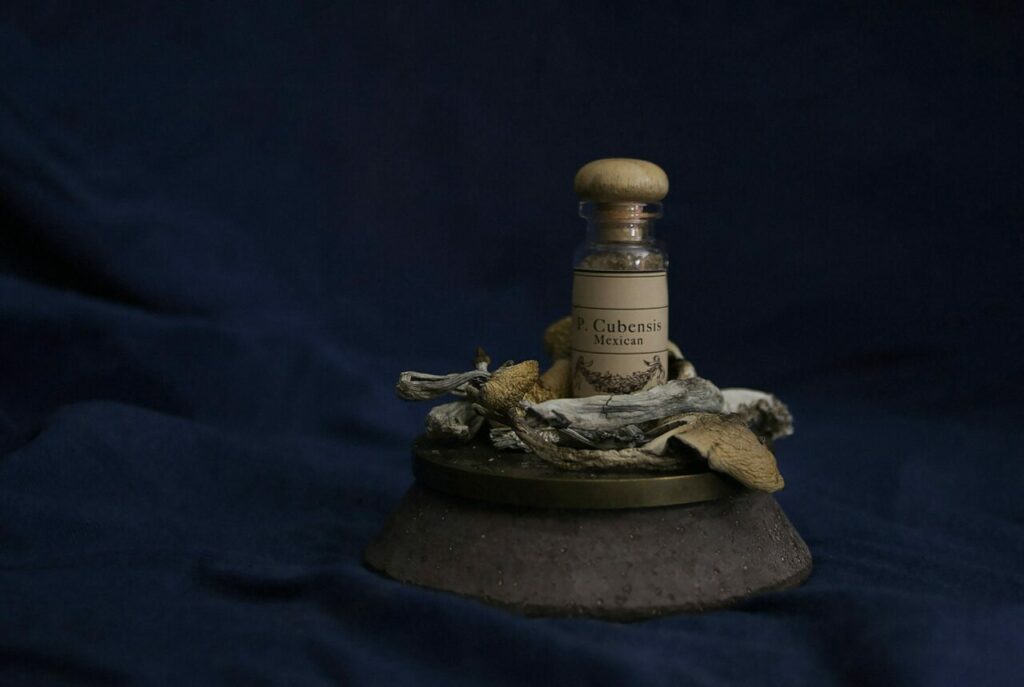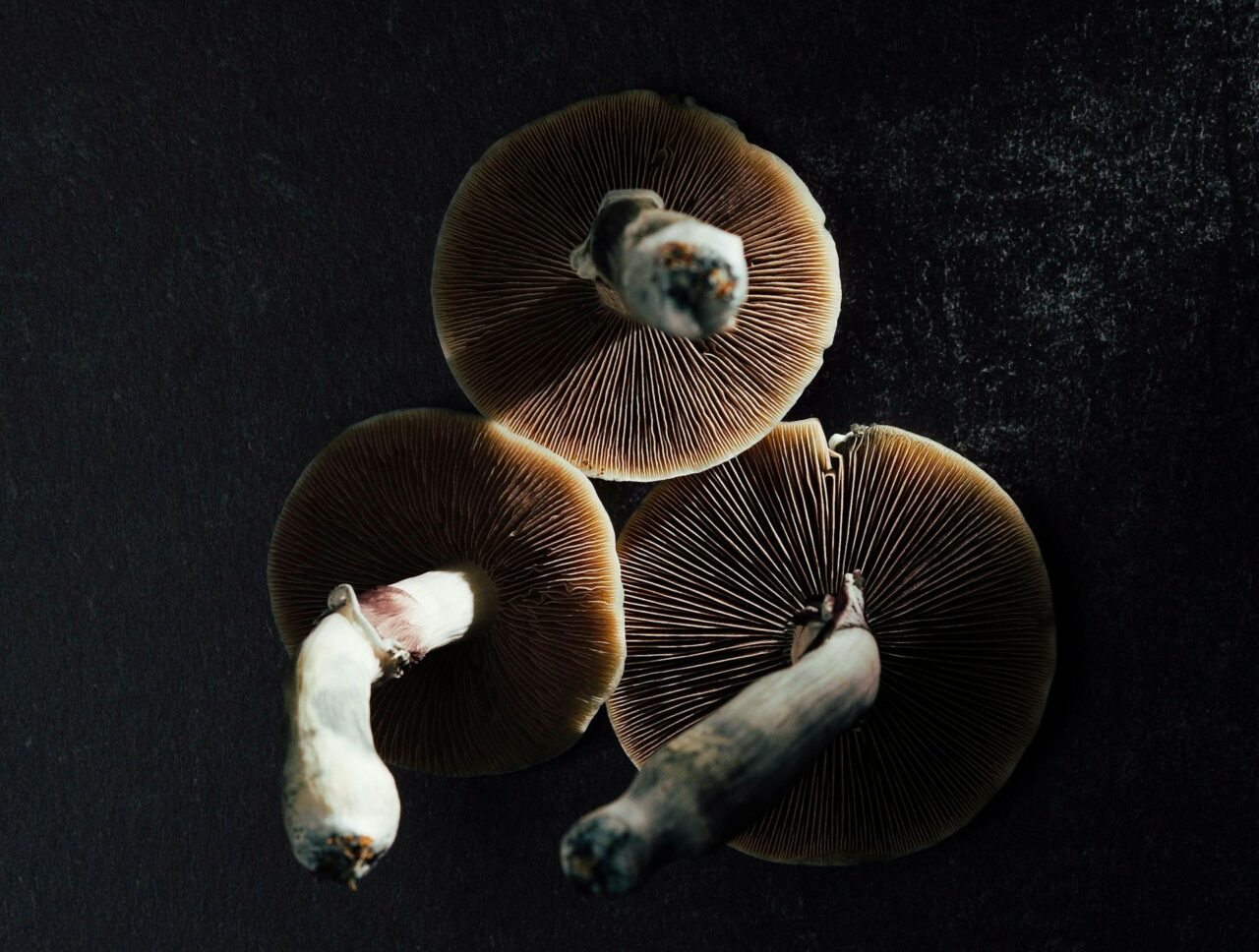The growing interest in naturally occurring magic mushrooms in Canada is paralleled by an increase in the popularity of lab-synthesized psilocybin products. A major draw for researchers is the guaranteed dosage these products offer. Nonetheless, they may not realize that natural mushrooms can possess higher potency than their pharmaceutical equivalents. The considerable contrasts between the two, including disparate strength levels, have been underlined by experts.

Key Highlights:
- More than 180 species of natural mushrooms exist, each offering varying potency levels. The effects can be influenced by factors such as the species, consumption method, cultivation practices, and individual tolerance.
- Artificial psilocybin, a lab-created version of the natural compound, is developed in controlled settings to ensure consistency and purity. This is particularly important in clinical research, especially concerning mental health treatments.
- The combined effects of various compounds found in psychedelic mushrooms, like psilocin and baeocystin, may lead to a more powerful and profound experience than a single compound alone.
Emerging Market: Diverse Psychedelic Forms
Psilocybin mushrooms are gaining significant traction in Canada, particularly for addressing specific mental health disorders such as OCD, depression, PTSD, and anxiety. Prompted by this escalating interest, provincial governments are starting to explore the option of decriminalizing their recreational use.
In 2020, Canada sanctioned the restricted medical use of these mushrooms under certain stipulations. Just the previous year, the federal government granted permission to select terminally ill patients to employ these substances for symptom management.
These progressive strides have paved the way for the advent of synthetic psychedelics.
The Ongoing Dialogue
The enduring debate about natural versus lab-engineered psychedelics revolves around safety, accessibility, and cost considerations.
While some advocate for natural psychedelics as they provide a more comprehensive and traditional experience, supporters of the lab-created versions emphasize their suitability for medical use due to easy standardization, guaranteed dosage, and quality control.
Though lab-made psychoactive substances could enhance accessibility, worries about possible drug monopolization linger. Detractors argue this could result in less
Higher costs and accessibility might pose problems for users.
/wp:paragraph –>A Comprehensive Look at Psilocybin
Psilocybe cubensis, a kind of magic mushroom, ranks among the numerous naturally occurring psychedelic substances present today. Magic mushrooms are famous for their psychoactive effects and come in a variety of strains such as Golden Teachers, Amazonian Cubensis, and Blue Meanies, to name a few. Psilocybe cubensis is the most common family among these.
Unpacking the Psychedelic Mechanism
The mushroom produces a substance called psilocin, which transforms into a new chemical upon processing by the liver. This newly formed compound engages with the brain’s serotonin receptors, particularly the 5-HT2A receptor.
The 5-HT2A receptor significantly influences mood regulation, cognitive operations, and perception. Interaction with the new compound alters the standard functioning of serotonin pathways, resulting in changed visual and auditory perception, thought pattern modifications, and shifts in emotional states. These changes culminate in heightened mood, amplified creativity, introspection, and the experiences typically referred to as “psychedelic”.
Two Main Categories
| Natural | Found in over 180 mushroom species, the strength varies depending on the species of mushroom. Psilocybe cubensis is a prevalent variety. The effects can change based on how it’s consumed, cultivation methods, and individual tolerance. |
| Synthetic | Manufactured in labs and chemically identical to natural compounds. They’re made in controlled conditions to ensure uniformity and purity. These are increasingly being studied for clinical use, particularly in mental health treatments. |
Contrasting Nature’s Offering and Science’s Invention: The Fundamental Differences
Certain species of magic mushrooms naturally contain these drugs. Native communities in North and South America have incorporated these mushrooms in their ceremonies and rituals, attributing them sacred or divine properties.
- Derived from plants and mushrooms
- Utilized in ancient ceremonies and healing practices
- The unique genetic composition of each strain determines its potency
On the other hand,
A synthetic drug is a product of laboratory manufacturing.
A substance resembling a specific compound’s natural chemical structure closely. These drugs are precisely engineered by experts in regulated environments to ensure precision. Although they behave similarly to natural drugs, they have the potential to alter the entire psychedelic experience.- Constructed by experienced pharmaceutical experts
- Modern advancements designed for medicinal applications
- Accurately determined potency due to a controlled production process
Organic substances provide more advantages due to their bioactive compounds. Various kinds of mushrooms can contain different amounts of psilocybin and other compounds, resulting in a wide range of effects.
Researcher Perspectives
A study conducted at Hebrew University showed that psychedelic mushrooms have a more potent and enduring effect on synaptic plasticity than their synthetic counterparts. The research group explored how the drug affected mice’s brain activity by observing changes in behavior and specific brain chemicals.
The study discovered that the extract reduced head twitches and promoted the growth of new brain connections. This suggests that mushroom extract could provide more advantages than a single compound.
The researchers also presented the idea of the “entourage effect”. They described it as the event where the combined effect of multiple compounds in psychedelic mushrooms could be greater than the effects of individual compounds. In the case of mushrooms, psilocin, baeocystin, and other tryptamines could collaborate to create a profound experience.
These extra chemicals are not found in substances produced in labs, which could result in minor differences in effects, even if the psychedelic content is the same.
Expert Opinions on Nature’s Superiority
Research consistently shows that psilocybin—in any form—provides promising outcomes for treating various psychiatric disorders. A study carried out in 2024 examined the effects of controlled substances on patients with treatment-resistant depression. It observed symptom reductions following the use of magic mushrooms.
When used alongside other treatments, organic psychedelics may stimulate deeper emotional processing and revelations during therapy sessions, thereby enhancing long-term results.
Researchers from the same university have noted that hallucinogenic mushrooms boost synaptic plasticity. They possess a unique metabolic profile that affects oxidative stress and energy production pathways, unlike psychedelics created in labs.
Implications in the Market
Canadians’ perceptions as well as buying behavior towards psychedelics could be influenced by the growing body of research on the subject. Health Canada’s early initiatives, such as the Special Access Program, are demonstrating potential in paving the path towards legalization and revolutionizing the therapy landscape. Therapy assisted by Psilocybin could emerge as a frontline treatment methodology in the near future.
The importance of organic choices is projected to rise in clinical trial and therapeutic settings. As the country progresses towards fully unlocking the potential of organic psychedelics, substantial progress in mental health therapies is anticipated.
Guidelines for Safely Acquiring Shrooms in Canada
- By means of Section 56 Exemption: Health Canada recognizes that psilocybin may be used as an alternative therapy by patients with severe medical conditions. This exemption is a part of the Controlled Drugs and Substances Act.
- Clinical Trials: Preliminary clinical trials are approved to investigate the drug’s potential in treating mental health disorders. Participants must meet specific requirements and pass a physician’s screening.
- Online Market: Psilocybin capsules or edibles can be purchased from online sellers in Canada, however, it’s crucial to buy from reliable sources.
Explore the Power of Natural Compounds
Nature is abundant with marvels, and shrooms are one of them. Instead of turning to synthetic psychedelics, consider the naturally potent magic mushrooms from Canada. They are strong and therapeutic. Browse through our finest, naturally acquired shroom strains at Shroom Gummies Canada.
The shrooms we retail not only match the standard but exceed it by maintaining their purest and most authentic composition in dehydrated form. Make your purchase today and receive your chosen items conveniently and discreetly delivered to your home.
Frequently Asked Questions
What are baeocystin and norbaeocystin?
Baeocystin and Norbaeocystin are both tryptamine or indole alkaloids. They possess a chemical resemblance to psilocybin. These tryptamine derivatives act as secondary alkaloids in shrooms, adding to the overall psychedelic experience, though at a lesser extent. Baeocystin and Norbaeocystin have similar chemical structures but
The psychoactive properties of these substances may vary.
Are organic dried mushrooms present in capsules and edibles?
The experience may vary depending on the source. Online Dispensaries offer products abundant in organic compounds, facilitating the full entourage effect. Capsules often contain synthetic compounds and are frequently used in clinical trials and medical centers.
Do natural psychedelics yield deeper experiences?
It’s crucial to understand that expecting a profound experience from a natural psychedelic may indeed cultivate such a result. Our expectations, a component of the ‘set’, can guide the journey. Natural psychedelics are commonly linked with ceremonial traditions, and this ritualistic setting can lead to uniquely enriching experiences. These experiences differ in several ways from clinic sessions that involve synthetic compounds.





